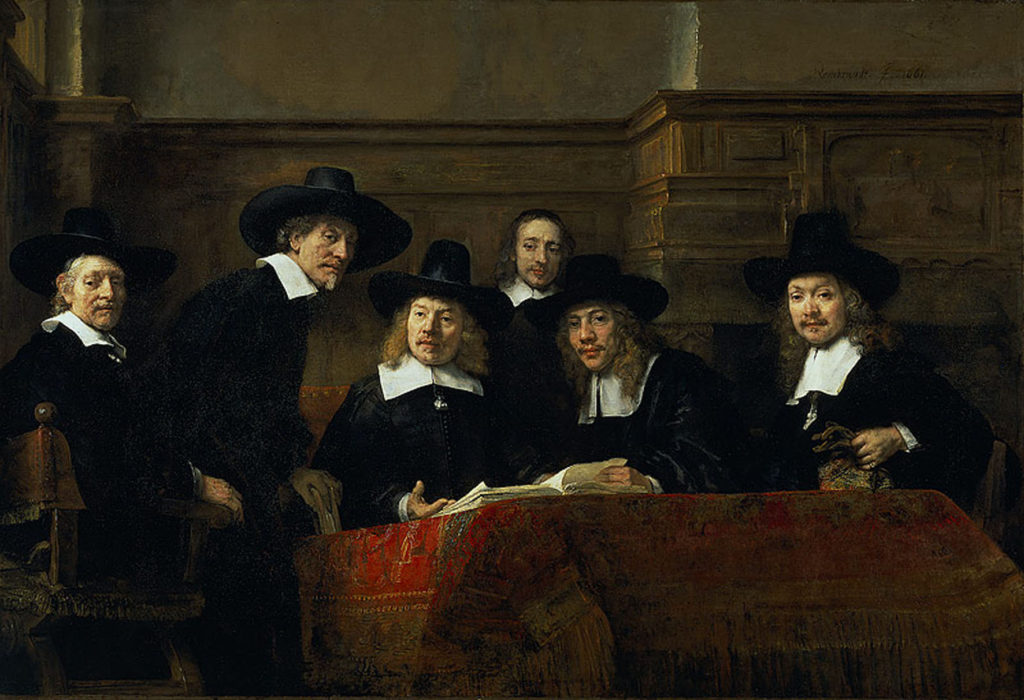
Every culture has a golden age of artmaking. It’s a time when the stars align: the economy is good, political unrest declines, people are happy, and art miraculously no longer sucks. Instead, it becomes amazing, even if only for a short while. For the Dutch, this happened during the seventeenth century and ended at the turn of the eighteenth century. During this time, artists like Peter Paul Rubens and Frans Hals defined what great Dutch art could be.

So let’s delve into the Dutch masters...and no, I don’t mean the “cigars,” you pothead.
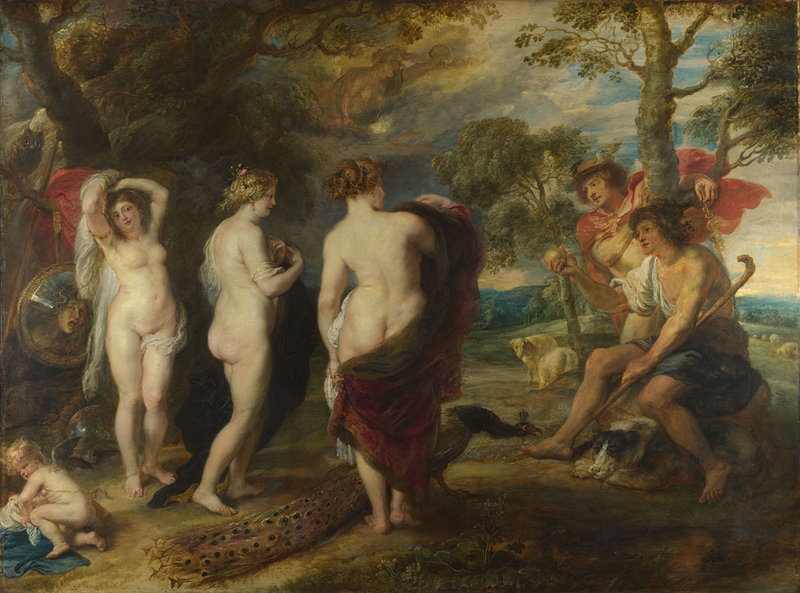
The Judgement of Paris by Peter Paul Rubens at The National Gallery London
Peter Paul Rubens launched this great period of Dutch art, but he had to leave Antwerp to study the art of the Italian Renaissance to do so. Go figure. It’s a well-known fact that Rubens loved fleshy ladies; their soft, pudgy bodies dominate his paintings. The term Rubenesque has even been coined to describe voluptuous nudes in an artwork. Despite his study of chiseled Italian Renaissance bodies, Rubens knew that his contemporaries just didn’t look like that. He decided to paint people as he actually saw them. Who knew the Dutch Golden Age was so #bodypositive?

Rubens is also best remembered for marrying a 16-year-old at the ripe, old age of 53. He was so smitten with his new wife that he featured the young Hélène Fourment in many of his later paintings, including a version of the above work, where she appears as Venus, the goddess of love, herself. Today such a marriage would probably make us call for Rubens to renounce his titles, as he served as an international diplomat for a period, so let’s be glad this questionable relationship is all said and done.
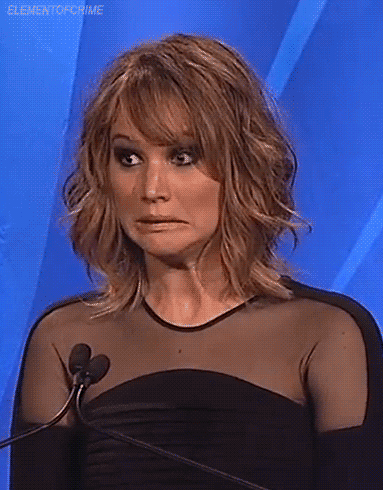
Farther north in the Dutch Republic, in places like Haarlem and Amsterdam, the church didn’t play as large a role as it did in Flanders, where Rubens was working. This allowed for private commissions and fostered an open art market, where artworks functioned as commodities and didn’t rely on Bible stories or the Classics to sell. Instead, the common man reigned supreme. Enter the hilarious, drunk, and debaucherous world of modern Holland, as painted by Frans Hals.
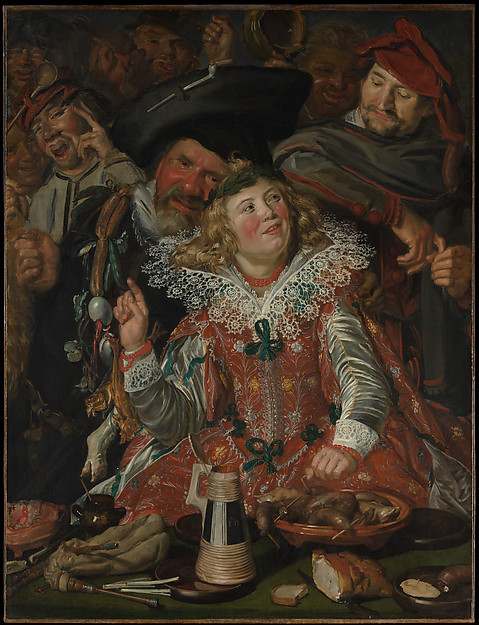
Merrymakers at Shrovetide by Frans Hals at The Metropolitan Museum of Art
After seeing this painting, I’m convinced that, if I could’ve lived in a totally different time and place, I might have chosen to live in seventeenth-century Holland. Just look at how awesome this party looks! The ale is clearly flowing, and there’s plenty of food to go around.
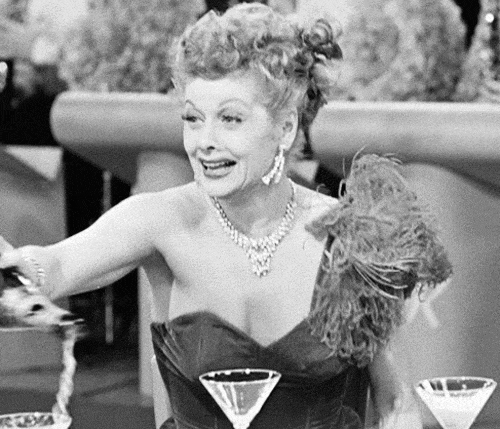
Shrovetide is also known as Mardi Gras, which explains this crazy scene. These dudes are so wasted that they are in the midst of mistaking the central figure for a slightly butch young girl – it’s actually a boy in drag. Again, sign me up, hunties!
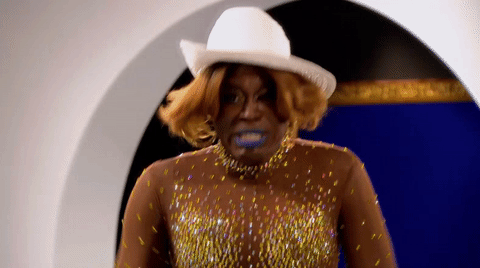
It’s actually a very lewd painting, with many of the foods serving as sexual references. For one, the garland of salted herring and mussels represents male and female genitals. Despite the highly sexual subject matter, people found Hals’s work hilarious and refreshing. Many of the French masters, including Manet and Van Gogh flocked to Haarlem to study his brushwork.
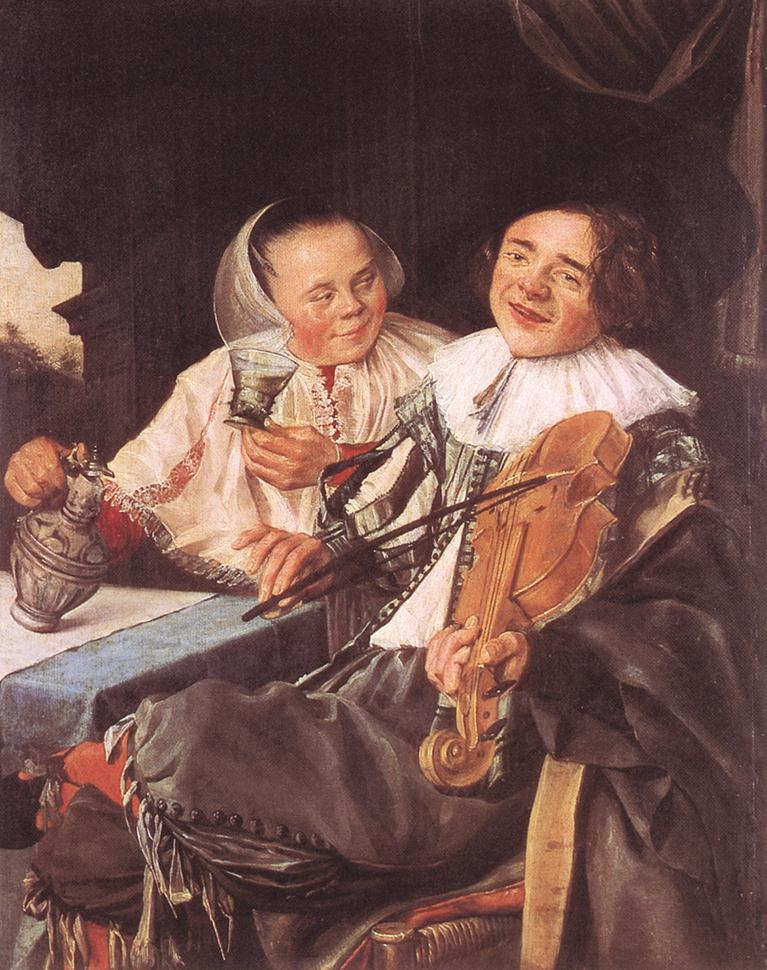
The Happy Couple by Judith Leyster at the Louvre Museum
This charming work had been attributed to Frans Hals for over a century because, clearly, a woman could never produce such high-caliber, sexual, and funny work. Judith Leyster was a female Dutch Golden Age artist who was forgotten for nearly 250 years after her death in 1660. That is, until a shocking discovery in 1892 revealed that this painting was actually by...a woman!

Scholars realized that the mysterious signature below the violinist’s shoe – a combined J and L with a star – identified the artist as none other than Judith Leyster, which then opened up an art-historical can of worms. It turned out that Leyster was actually a pretty big deal in her day. She was one of the first women to be admitted to a Guild of Saint Luke in seventeenth-century Haarlem. Like Hals, she catered to contemporary tastes, which meant that she painted genre scenes of everyday people drinking too much and getting flirty in the local taverns.
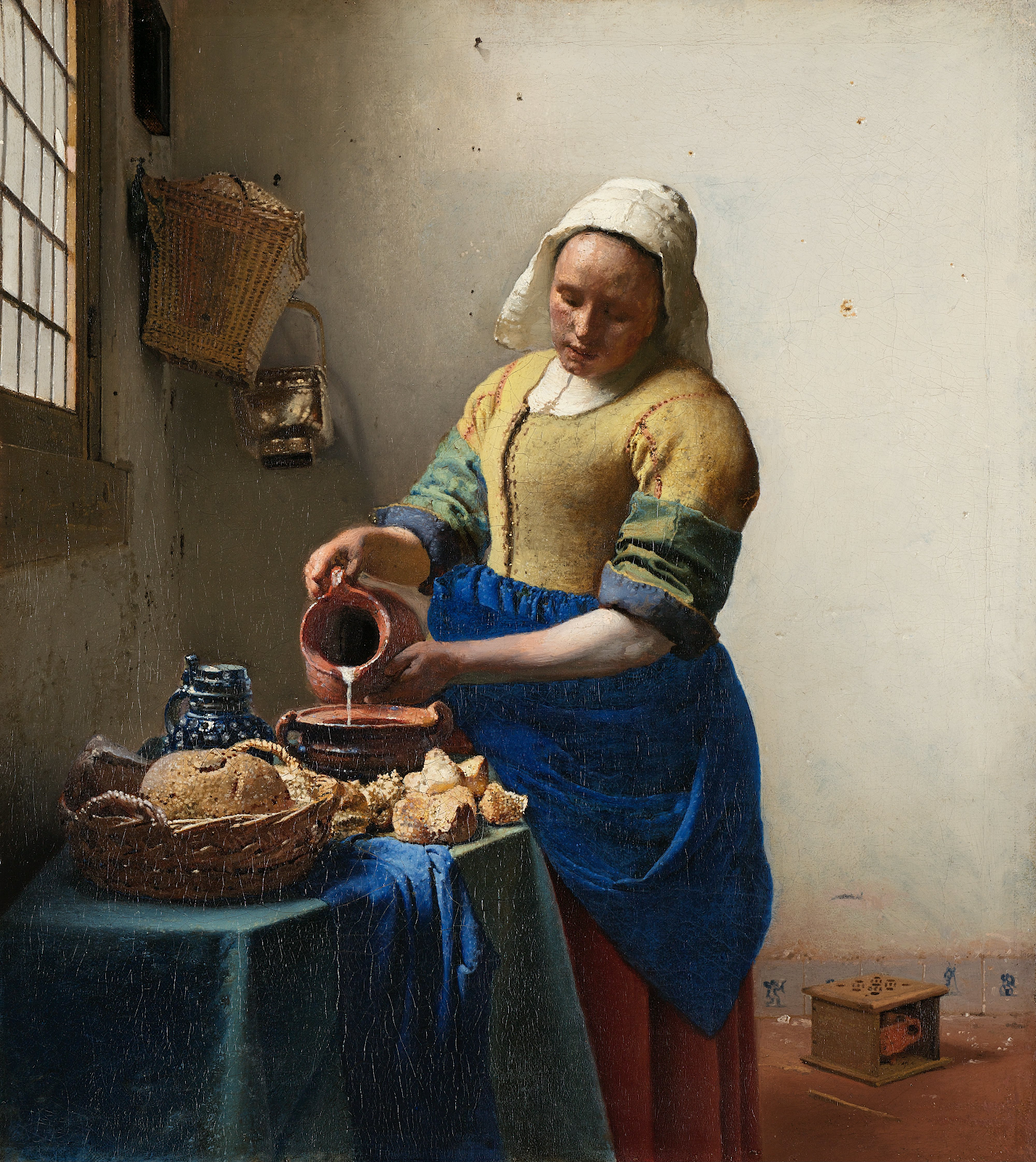
The Milkmaid by Johannes Vermeer in the Rijksmuseum
Unlike the raucous genre scenes of Hals and Leyster, Vermeer’s domestic scenes of maids and other young women are calm and intimate. For Vermeer, narrative wasn’t as important as showing women frozen in time, eternally performing the most mundane daily chores. Although this may seem terribly boring to us now, seventeenth-century Dutch viewers valued this steady and unenduring performance of chores. If it meant I’d get forever memorialized in a famous painting, I might actually try doing some chores of my own.

But, because art is always a little weird and pretty much any subject can become sexual, there are some odd, erotic undertones to Vermeer’s seemingly-innocent maid. Despite the tame nature of the painting, Vermeer intended it to be just as lewd as those by Hals and Leyster. During this time, milk maids had a reputation for being sexually available to gentlemen of a higher class. And since Vermeer almost exclusively painted for a small circle of upper-class art-lovers….well, you can do the math.

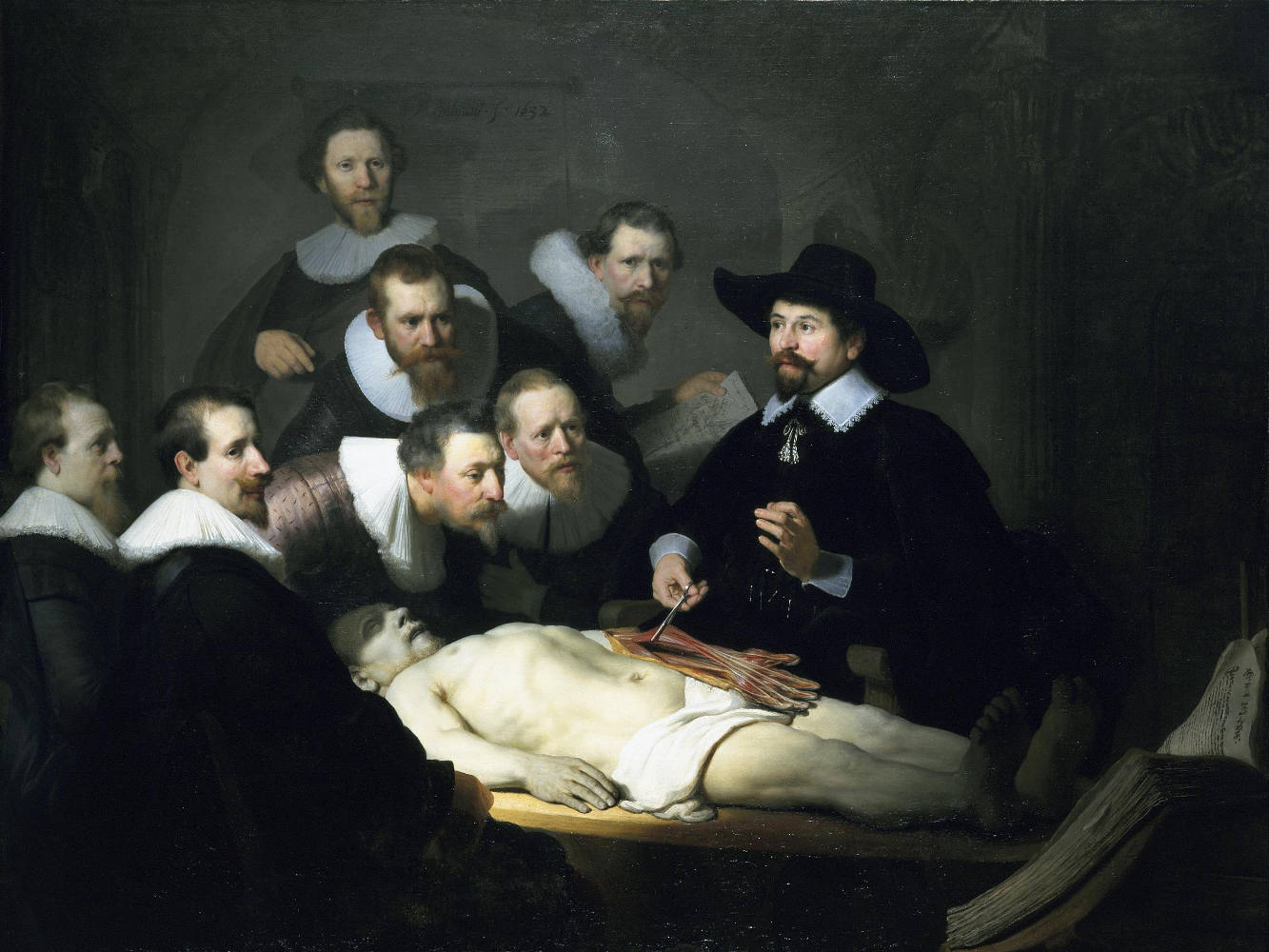
The Anatomy Lesson of Dr. Nicolaes Tulp by Rembrandt at Maritshuis
Like Madonna, Prince, and Cher, all great artists only go by a single name. Rembrandt most likely stole this idea from the Italian, single-named greats who came before him – Titian and Raphael. He dropped the “van Rijn” from his name pretty early in his career. Total diva.

Rembrandt is known for his obsession with direct observation and painting from life. Maybe that’s why he thought that a doctor doing some direct observation of his own would be an interesting subject for a painting. The link between artists and doctors seems to pop up pretty often, as this painting gives me heavy Gross Clinic vibes. It turns out that Rembrandt has inspired artists for centuries, including Picasso himself. The Spaniard’s bookshelves were full of reproductions of the Dutch artist’s works.

This love affair with looking and describing through paint truly describes the Dutch Golden Age. Whether it was a bouquet of flowers by another esteemed, female painter named Rachel Ruysch or a moralistic tale of the underclass by Jan Steen, there’s never a shortage of detail in these paintings.
Sources
- Van Wyhe, Cordula. “Did Rubens Make Big Beautiful?” iWonder. BBC. http://www.bbc.co.uk/guides/zt6jq6f. Accessed December 17, 2017.
- The National Gallery. “Peter Paul Rubens.” Artist A to Z. https://www.nationalgallery.org.uk/artists/peter-paul-rubens. Accessed December 17, 2017.
- The Metropolitan Museum of Art. “Merrymakers at Shrovetide.” Collection Online. https://www.metmuseum.org/art/collection/search/436622. Accessed December 23, 2017.
- The Metropolitan Museum of Art. “Low Countries, 1600–1800 A.D.” The Heilbrunn Timeline of Art History. October 2003. https://www.metmuseum.org/toah/ht/09/euwl.html. Accessed December 17, 2017.
- Smith, Dominic. “Daughters of the Guild.” The Paris Review. April 4, 2016. https://www.theparisreview.org/blog/2016/04/04/daughters-of-the-guild/. Accessed December 26, 2017.
- Schjeldahl, Peter. “A Woman’s Work: The Brief Career of Judith Leyster.” The New Yorker. June 29, 2009. https://www.newyorker.com/magazine/2009/06/29/a-womans-work-2. Accessed December 26, 2017.
- Schama, Simon. “Rembrandt’s Ghost: Picasso Looks Back.” The New Yorker. March 26, 2007. https://www.newyorker.com/magazine/2007/03/26/rembrandts-ghost. Accessed December 26, 2017.
- Liedtke, Walter. “Rembrandt van Rijn (1606–1669): Paintings.” In The Heilbrunn Timeline of Art History. The Metropolitan Museum of Art. October 2003. https://www.metmuseum.org/toah/hd/rmbt/hd_rmbt.htm. Accessed December 26, 2017.
- Liedtke, Walter. “Peter Paul Rubens (1577-1640) and Anthony van Dyck (1599-1641): Paintings.” In The Heilbrunn Timeline of Art History. The Metropolitan Museum of Art. October 2003. https://www.metmuseum.org/toah/hd/rvd_p/hd_rvd_p.htm. Accessed December 12, 2017.
- Liedtke, Walter. “Frans Hals (1582/83-1666).” In The Heilbrunn Timeline of Art History. The Metropolitan Museum of Art. https://www.metmuseum.org/toah/hd/hals/hd_hals.htm. Accessed December 23, 2017.
- Davies, Penelope J.E., Frima Fox Hofrichter, Joseph Jacobs, Ann M. Roberts, and David L. Simon. Janson’s Basic History of Western Art. 8th edition. Upper Saddle River, NJ: Pearson Education, Inc., 2009.
- Liedtke, Walter. “Johannes Vermeer (1632-1675).” The Heilbrunn Timeline of Art History. The Metropolitan Museum of Art. October 2003. https://www.metmuseum.org/toah/hd/verm/hd_verm.htm. Accessed March 5, 2018.
- Liedtke, Walter. “Johannes Vermeer (1632–1675) and The Milkmaid.” The Heilbrunn Timeline of Art History. The Metropolitan Museum of Art. August 2009. https://www.metmuseum.org/toah/hd/milk/hd_milk.htm. Accessed March 5, 2018.










Surya Grahan Tips For Pregnant Women